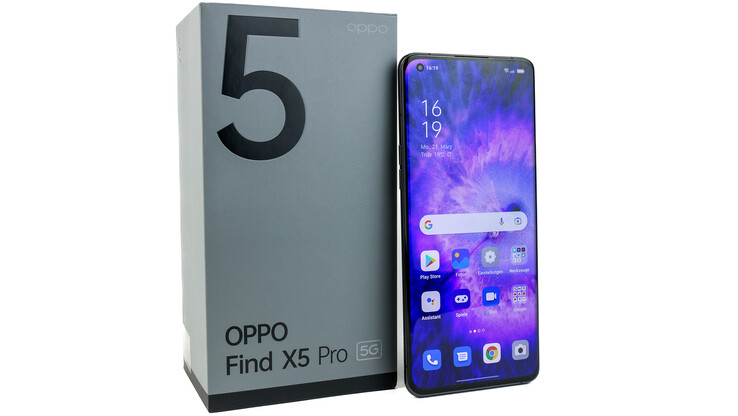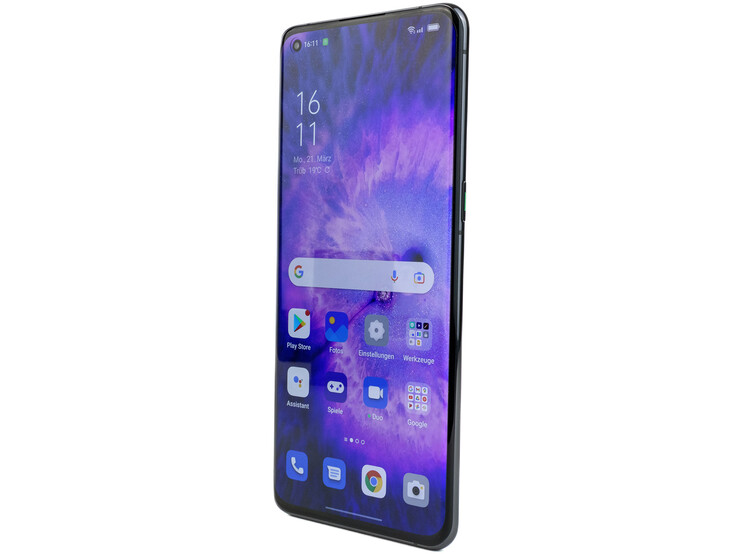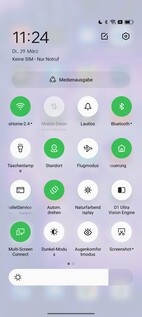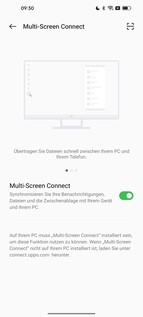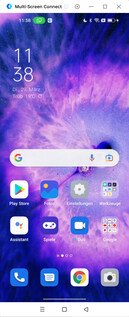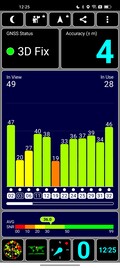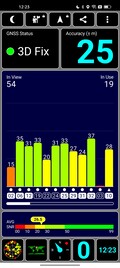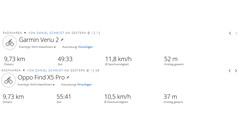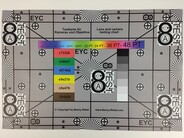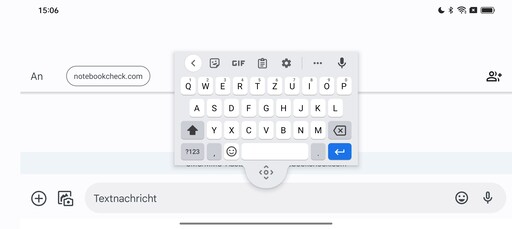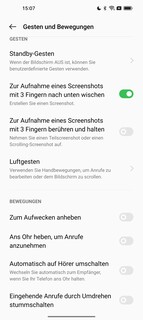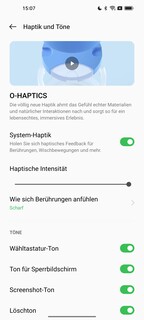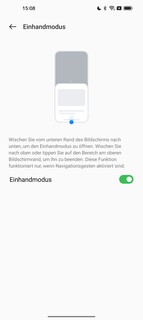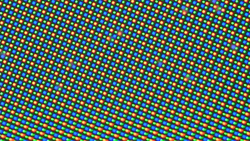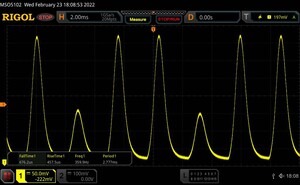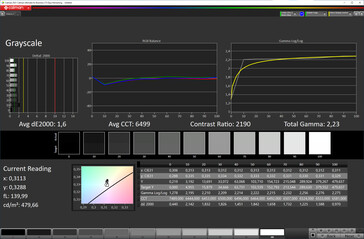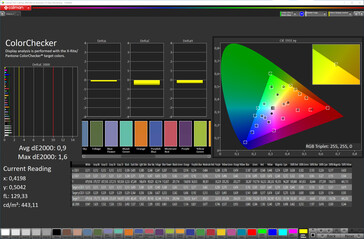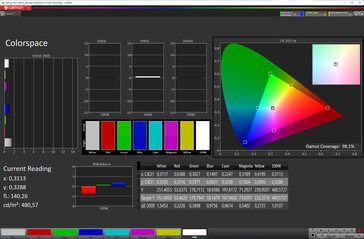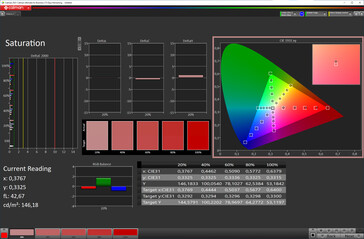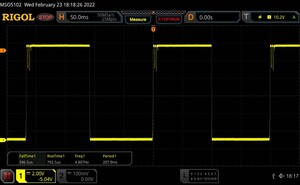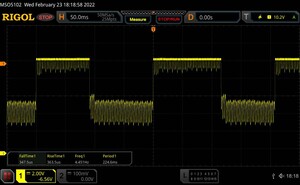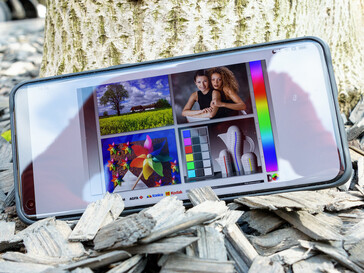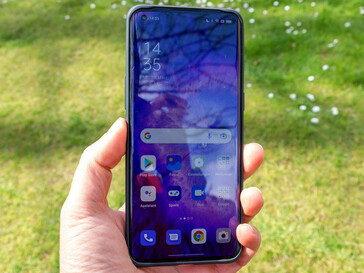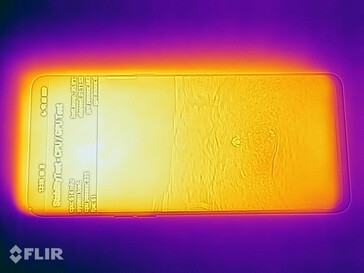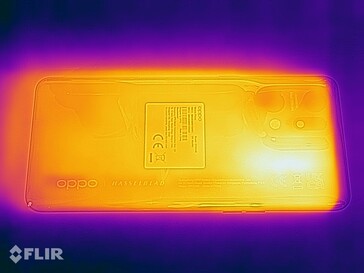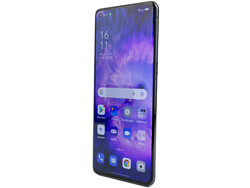Oppo Find X5 Pro Review - Sleek smartphone with a Hasselblad camera ↺
The Oppo Find X5 Pro supercedes the Find X3 Pro and is not that different from its predecessor. The organic looking design of the back cover is retained and the phone becomes heavier. The microscope lens has been scrapped, the battery is larger and the remaining cameras have received a lot of fine-tuning. But there are no new sensors.
Just a single SKU of the Find X5 Pro is currently available in Europe and the phone isn't available with the MediaTek Dimensity 9000 as it is in China. The only model available comes with a Qualcomm Snapdragon 8 Gen 1. With an RRP of 1,299 euros, the price has also risen noticeably.
The competition
Rating | Date | Model | Weight | Drive | Size | Resolution | Best Price |
|---|---|---|---|---|---|---|---|
| 89.2 % | 04/2022 | Oppo Find X5 Pro SD 8 Gen 1, Adreno 730 | 221 g | 256 GB UFS 3.1 Flash | 6.70" | 3216x1440 | |
| 88.9 % | 03/2021 | Oppo Find X3 Pro SD 888 5G, Adreno 660 | 193 g | 256 GB UFS 3.1 Flash | 6.70" | 3216x1440 | |
| 89.4 % | 03/2022 | Samsung Galaxy S22 Ultra 5G Exynos 2200, Xclipse 920 | 228 g | 128 GB UFS 3.1 Flash | 6.80" | 3088x1440 | |
| 90.5 % | 10/2021 | Apple iPhone 13 Pro Max A15, A15 GPU 5-Core | 238 g | 128 GB NVMe | 6.70" | 2778x1284 | |
| 87.6 % | 02/2022 | Xiaomi 12 Pro SD 8 Gen 1, Adreno 730 | 204 g | 256 GB UFS 3.1 Flash | 6.73" | 3200x1440 | |
| 87.9 % | 03/2022 | Motorola Edge 30 Pro SD 8 Gen 1, Adreno 730 | 196 g | 256 GB UFS 3.1 Flash | 6.70" | 2400x1080 |
Case - One noble garment made of glass and ceramics
The Oppo Find X5 Pro has a nominal thickness of 8.5mm (1/3in), but our measurements say 8.7mm. At the highest point of the camera, it is even 11.15mm, with the result that this smartphone wobbles quite vigorously on a flat surface, even with a case. The Find X5 Pro is available in two color options - black and white.
The screen is made of Corning Gorilla Glass Victus while the back is made of a nanocrystalline ceramic. There's a highly polished aluminum frame inbetween. The Find X5 Pro is quite heavy, but it is well balanced and its rounded edges allow it to rest comfortably in your hand. However, both sides are real fingerprint magnets and the concise legal markings on the back of the phone are rather ugly. This could have been dealt with more elegantly.
The build quality is thouroughly convincing. The joins are tight-fitting and uniform and creaking is negligible under torsion. The cover of the SIM tray is flush with the aluminum frame, has the same color and can accommodate two nano SIM cards. The Find X5 Pro is IP68 certified, making it both dustproof and waterproof.
Features - no surprises
The Oppo Find X5 Pro is well served by a fast USB 3.2 port, which not only charges the smartphone, but also provides a way to connect an OTG adapter and enable wired image output and multiple screen display.
A notification LED is not included because it has been replaced by the always-on display feature; nor is a radio receiver or an audio jack installed in the Oppo smartphone. Memory expansion using a microSD card is not available.
Software - FinX5 Pro, Android 12 and ColorOS 12.1
The Oppo comes with Android 12 and the in-house user interface ColorOS 12.1. Oppo mentions two years of updates and an additional third year for security patches, scheduled to be rolled out monthly.
Oppo pre-installs a number of third-party apps, including Amazon, Facebook, TikTok, and AliExpress, among others. However, these can be easily uninstalled. Furthermore, this smartphone's display can be mirrored on a Windows PC using its Multi-Screen support feature. It can be fully operated from there including data transfer via drag-and-drop. Although the program itself is only available in English, it works perfectly.
Communications and GNSS - Tracking's mediocre and there's no Wi-Fi 6E
The Oppo Find X5 Pro supports all major cellular standards, including 5G Sub6, but not mmWave. The frequency coverage is very wide for both 5G-SA and NSA, so there should be no reception issues.
The WLAN module fully complies with Wi-Fi 6 specification (VHT160 included), but the Oppo smartphone limited itself to the 80 MHz channel width in the test with our reference router, an Asus ROG Rapture GT-AXE11000. As a result the transmission rates are very stable but do still have a lot of room for improvement.
| Networking | |
| iperf3 receive AXE11000 | |
| Xiaomi 12 Pro | |
| Motorola Edge 30 Pro | |
| Oppo Find X5 Pro | |
| Samsung Galaxy S22 Ultra 5G | |
| Average of class Smartphone (34.8 - 1875, n=210, last 2 years) | |
| iperf3 transmit AXE11000 | |
| Xiaomi 12 Pro | |
| Motorola Edge 30 Pro | |
| Oppo Find X5 Pro | |
| Average of class Smartphone (40.5 - 1810, n=211, last 2 years) | |
| Samsung Galaxy S22 Ultra 5G | |
| iperf3 transmit AX12 | |
| Oppo Find X3 Pro | |
| Apple iPhone 13 Pro Max | |
| iperf3 receive AX12 | |
| Apple iPhone 13 Pro Max | |
| Oppo Find X3 Pro | |
| Average of class Smartphone (last 2 years) | |
| iperf3 transmit AXE11000 6GHz | |
| Samsung Galaxy S22 Ultra 5G | |
| Average of class Smartphone (229 - 1894, n=61, last 2 years) | |
| iperf3 receive AXE11000 6GHz | |
| Samsung Galaxy S22 Ultra 5G | |
| Average of class Smartphone (598 - 1840, n=61, last 2 years) | |
In terms of GNSS support, the Oppo Find X5 Pro is almost exclusively limited to single-band operation, only BeiDou is supported with two frequency bands. The GPS signal lock is quite quick to happen outdoors, but it takes some time for the location to be determined precisely and the signal to become stable.
This was also noticeable on our short bike ride, during which we conducted a comparison of the Find X5 Pro with the Garmin Venu 2 Smartwatch. Somewhat surprisingly, the recorded distance of both devices was the same in length, but the smartphone had a tendency to navigate across paddocks and fly past bridges. Nevertheless, it should be sufficient for simple navigation.
Features and voice quality
As with its predecessor the Find X3 Pro, we are more than satisfied with the X5 Pro in terms of telephony features. The voice quality at the ear is very good in both directions and only very loud ambient noise causes a slight distortion of the user's voice. Otherwise, ambient noise is almost completely filtered out. The speakerphone is punchy, but voices have a slightly spluttering quality and reverberation is noticeable at greater distances.
The Oppo Find X5 Pro can accommodate two nano SIM cards or use an eSIM instead of a physical SIM. VoLTE and Wi-Fi calls are supported, but there is no in-built SIP account management.
Cameras - From four to three
The technical specs of the front camera of the Oppo Find X5 Pro have not changed; 32MP and a fixed focus lens. The image quality is great and the app offers an abundance of settings options to customize your own look. Unfortunately, video recording is limited to Full HD.
The main camera on the back has the same sensors as last year, but the microscope lens has been removed. Nevertheless, Oppo has optimized much of the camera setup. More glass lens elements are used, the image stabilization is now composed of a tripple axis sensor shift and a dual axis OIS and as icing on the cake Oppo has introduced an additional imaging NPU with a MariSilicon X.
The main camera takes really great pictures that are, however, somewhat cold in colour when using the default settings. We would have expected the colours to be slightly more true, especially since the cooperation with Hasselblad is aimed specifically at this functionality. We also like its image stabilization that eliminates camera shake, even with longer focal lengths (up to 20x digital magnification). When using the 5x hybrid zoom, however, the images could do with a little more sharpness.
The ultra-wide angle has great depth of field and shows only minimal chromatic aberrations in the margins, a very convincing finding indeed. The lens also serves as a macro lens. When used in this manner, the camera switches automatically. This is not an optical disadvantage, as the same sensor is used as for the main camera lens. However, this function can also be deactivated in the settings.
At best, the Find X5 Pro can record video recordings in Ultra HD at 60 frames per second, but the AI highlight video function is not available in HFR formats. Zooming in or out is well designed and is achieved with a stepless control mechanism. When filming, the excellent image stabilization of this smartphone leaves a particularly positive impression.
Image Comparison
Choose a scene and navigate within the first image. One click changes the position on touchscreens. One click on the zoomed-in image opens the original in a new window. The first image shows the scaled photograph of the test device.
HauptkameraHauptkameraUltraweitwinkel5-facher ZoomLow-LightUnder controlled lighting conditions, the Oppo Find X5 Pro maps our test chart very accurately and only shows weak distortions in the margins. In the centre of the image, the white balance is once again too cold.
When photographing the ColorChecker, we were unable to detect this issue. Quite to the contrary, especially red and skin tones are well matched and depiction of all other colors is true.
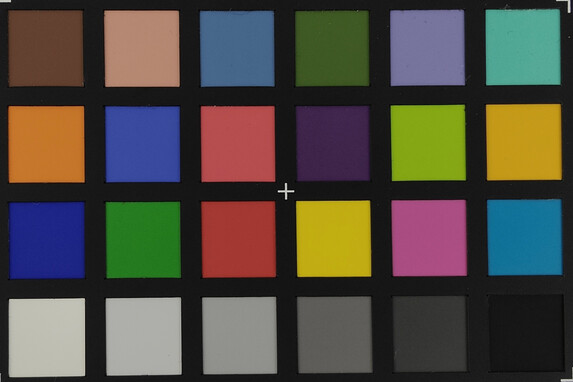

Accessories and Warranty - SuperVOOC power supply included
The Oppo Find X5 Pro ships with a modular power supply (max 80 watts, USB-A), a USB cable (Type-A to Type-C), a silicone bumper, a SIM needle and an OTG adapter.
The manufacturer provides a 24-month warranty on this smartphone in Germany.
Input Devices & Operation - Oppo Smartphone with Optical Fingerprint Sensor
The Oppo Find X5 Pro has a capacitive touch screen that can detect up to ten touches simultaneously and operates at a sampling rate of 240 Hz. Entries are implemented quickly and reliably on it. As delivered, there's a protective film over the display, which somewhat inhibits gliding across the screen surface and the cut-over to glass is quite noticeable.
The optical fingerprint sensor reliably detects stored fingerprints and unlocks the Find X5 Pro at appealing speed. Alternatively or additionally, faster, but also insecure 2D face recognition is available.
We were particularly impressed with the vibration mechanism with its quiet and snappy feedback. Aside from one-hand-gesture navigation several other optionally available screen control features and gesture modes are available.
Display - The Find X5 Pro has an accurate LTPO OLED screen
The 6.7 inch (17.02 cm) AMOLED-Display of the Oppo Find X5 Pro sports hardly any difference to its predecessors. It uses an adaptive refresh rate of up to 120Hz that Oppo claims can be reduced to as low as 10Hz. We were unexpectedly but positively surprised when the system lowered the refresh rate to as little as 1Hz.
The brightness of the screen is very good when the ambient light sensor is switched on, but competitors such as the Galaxy S22 Ultra or the Xiaomi 12 Pro do a significantly better job at this. Given an even spread of light and dark surfaces (APL50) the OLED delivers slightly more brightness up to 816 cd/m2. However, the advertised 1,300 cd/m2 couldn't even begin to be tickled out of this smartphone.
The OLED flicker oscillates irregularly between 179.7 and 361 Hz. We were unable to register anything other than a constant 120Hz for anything above the adjustable 98% brightness setting.
| |||||||||||||||||||||||||
Brightness Distribution: 97 %
Center on Battery: 746 cd/m²
Contrast: ∞:1 (Black: 0 cd/m²)
ΔE Color 0.9 | 0.5-29.43 Ø5
ΔE Greyscale 1.6 | 0.57-98 Ø5.3
98.1% sRGB (Calman 2D)
Gamma: 2.23
| Oppo Find X5 Pro AMOLED, 3216x1440, 6.70 | Oppo Find X3 Pro AMOLED, 3216x1440, 6.70 | Samsung Galaxy S22 Ultra 5G Dynamic AMOLED, 3088x1440, 6.80 | Apple iPhone 13 Pro Max OLED, 2778x1284, 6.70 | Xiaomi 12 Pro AMOLED, 3200x1440, 6.73 | Motorola Edge 30 Pro AMOLED, 2400x1080, 6.70 | |
|---|---|---|---|---|---|---|
| Screen | 0% | 9% | 23% | -13% | -13% | |
| Brightness middle | 746 | 759 2% | 1077 44% | 1049 41% | 959 29% | 649 -13% |
| Brightness | 744 | 776 4% | 1093 47% | 1060 42% | 977 31% | 649 -13% |
| Brightness Distribution | 97 | 94 -3% | 97 0% | 98 1% | 96 -1% | 98 1% |
| Black Level * | ||||||
| Colorchecker dE 2000 * | 0.9 | 0.8 11% | 1.2 -33% | 0.78 13% | 1.1 -22% | 1.18 -31% |
| Colorchecker dE 2000 max. * | 1.6 | 1.8 -13% | 2 -25% | 1.72 -8% | 3.1 -94% | 2.07 -29% |
| Greyscale dE 2000 * | 1.6 | 1.6 -0% | 1.3 19% | 0.8 50% | 1.9 -19% | 1.5 6% |
| Gamma | 2.23 99% | 2.23 99% | 2.37 93% | 2.181 101% | 2.22 99% | 2.236 98% |
| CCT | 6499 100% | 6512 100% | 6526 100% | 6559 99% | 6498 100% | 2538 256% |
* ... smaller is better
Screen Flickering / PWM (Pulse-Width Modulation)
| Screen flickering / PWM detected | 361 Hz | ||
The display backlight flickers at 361 Hz (worst case, e.g., utilizing PWM) . The frequency of 361 Hz is relatively high, so most users sensitive to PWM should not notice any flickering. However, there are reports that some users are still sensitive to PWM at 500 Hz and above, so be aware. In comparison: 53 % of all tested devices do not use PWM to dim the display. If PWM was detected, an average of 17900 (minimum: 5 - maximum: 3846000) Hz was measured. | |||
Measurements taken with fixed zoom level and different brightness settings (Rigol MSO5102)
When using the Nature setting, the colour rendition of the screen is very close to real-life. And if you make the effort to manually adjust the white balance setting (see screen shot) you will end up with a near perfect colour and grey-scale rendition on your screen. And to achieve this, just the smaller sRGB colour space model is used.
If you want the deeper colors offered by larger DCI-P3 colour space you will need to select the Vivid mode. But you will, at the same time, need to take a liking to more strongly saturated colours and colder images. Compensation for the latter is possible via the Natural Colour Display setting that enables colour temperature to be aligned to ambient lighting.
Display Response Times
| ↔ Response Time Black to White | ||
|---|---|---|
| 1.389 ms ... rise ↗ and fall ↘ combined | ↗ 0.793 ms rise | |
| ↘ 0.597 ms fall | ||
| The screen shows very fast response rates in our tests and should be very well suited for fast-paced gaming. In comparison, all tested devices range from 0.1 (minimum) to 240 (maximum) ms. » 4 % of all devices are better. This means that the measured response time is better than the average of all tested devices (21.5 ms). | ||
| ↔ Response Time 50% Grey to 80% Grey | ||
| 0.711 ms ... rise ↗ and fall ↘ combined | ↗ 0.364 ms rise | |
| ↘ 0.348 ms fall | ||
| The screen shows very fast response rates in our tests and should be very well suited for fast-paced gaming. In comparison, all tested devices range from 0.2 (minimum) to 636 (maximum) ms. » 1 % of all devices are better. This means that the measured response time is better than the average of all tested devices (33.7 ms). | ||
Performance - Snapdragon 8 Gen 1 instead of a Dimensity 9000
The European version of the Oppo Find X5 Pro is based exclusively on Qualcomm Snapdragon 8 Gen 1. In its country of origin, China, however, a second version that uses a MediaTek Dimensity 9000 is available. The CPU is mated to 12 GB of LPDDR5 RAM.
Mobile benchmarks have this Oppo model lagging behind the competition. This is indicative of sub-optimal cooling of the SoC as navigation in daily usage is smooth.
While CPU performance lies in the expected range, results from the AI benchmark are unexpectedly poor. The Procyon AI benchmark, however, shows somewhat better results up against other smartphones kitted out with the Snapdragon 8.
| UL Procyon AI Inference for Android - Overall Score NNAPI | |
| Average Qualcomm Snapdragon 8 Gen 1 (61568 - 81722, n=8) | |
| Oppo Find X5 Pro | |
| Xiaomi 12 Pro | |
| Average of class Smartphone (207 - 84787, n=150, last 2 years) | |
| Samsung Galaxy S22 Ultra 5G | |
Performance of the Adreno 730 is high in the GPU benchmarks, as expected. In some other GFX benchmarks, however, results remain below the potential performance of the graphics procesor. This is an early indication of an inadequate cooling system.
GFXBench (DX / GLBenchmark) 2.7: T-Rex Onscreen | 1920x1080 T-Rex Offscreen
GFXBench 3.0: on screen Manhattan Onscreen OGL | 1920x1080 1080p Manhattan Offscreen
GFXBench 3.1: on screen Manhattan ES 3.1 Onscreen | 1920x1080 Manhattan ES 3.1 Offscreen
GFXBench: on screen Car Chase Onscreen | 1920x1080 Car Chase Offscreen | on screen Aztec Ruins High Tier Onscreen | 2560x1440 Aztec Ruins High Tier Offscreen | on screen Aztec Ruins Normal Tier Onscreen | 1920x1080 Aztec Ruins Normal Tier Offscreen
| 3DMark / Wild Life Extreme Unlimited | |
| Apple iPhone 13 Pro Max | |
| Nubia RedMagic 7 | |
| Realme GT 2 Pro | |
| Oppo Find X5 Pro | |
| Xiaomi 12 Pro | |
| Samsung Galaxy S22 Ultra 5G | |
| Motorola Edge 30 Pro | |
| 3DMark / Wild Life Extreme | |
| Apple iPhone 13 Pro Max | |
| Xiaomi 12 Pro | |
| Nubia RedMagic 7 | |
| Realme GT 2 Pro | |
| Oppo Find X5 Pro | |
| Samsung Galaxy S22 Ultra 5G | |
| Motorola Edge 30 Pro | |
| 3DMark / Wild Life Unlimited Score | |
| Apple iPhone 13 Pro Max | |
| Xiaomi 12 Pro | |
| Nubia RedMagic 7 | |
| Oppo Find X5 Pro | |
| Realme GT 2 Pro | |
| Samsung Galaxy S22 Ultra 5G | |
| Motorola Edge 30 Pro | |
| Oppo Find X3 Pro | |
| 3DMark / Wild Life Score | |
| Nubia RedMagic 7 | |
| Xiaomi 12 Pro | |
| Oppo Find X5 Pro | |
| Apple iPhone 13 Pro Max | |
| Realme GT 2 Pro | |
| Samsung Galaxy S22 Ultra 5G | |
| Motorola Edge 30 Pro | |
| Oppo Find X3 Pro | |
| 3DMark / Sling Shot Extreme (ES 3.1) Unlimited | |
| Nubia RedMagic 7 | |
| Oppo Find X5 Pro | |
| Oppo Find X3 Pro | |
| Xiaomi 12 Pro | |
| Samsung Galaxy S22 Ultra 5G | |
| Apple iPhone 13 Pro Max | |
| 3DMark / Sling Shot Extreme (ES 3.1) Unlimited Graphics | |
| Nubia RedMagic 7 | |
| Oppo Find X5 Pro | |
| Apple iPhone 13 Pro Max | |
| Xiaomi 12 Pro | |
| Samsung Galaxy S22 Ultra 5G | |
| Oppo Find X3 Pro | |
| 3DMark / Sling Shot Extreme (ES 3.1) Unlimited Physics | |
| Oppo Find X3 Pro | |
| Nubia RedMagic 7 | |
| Xiaomi 12 Pro | |
| Samsung Galaxy S22 Ultra 5G | |
| Oppo Find X5 Pro | |
| Apple iPhone 13 Pro Max | |
| 3DMark / Sling Shot OpenGL ES 3.0 Unlimited | |
| Nubia RedMagic 7 | |
| Oppo Find X5 Pro | |
| Xiaomi 12 Pro | |
| Samsung Galaxy S22 Ultra 5G | |
| Oppo Find X3 Pro | |
| 3DMark / Sling Shot OpenGL ES 3.0 Unlimited Graphics | |
| Nubia RedMagic 7 | |
| Oppo Find X5 Pro | |
| Xiaomi 12 Pro | |
| Samsung Galaxy S22 Ultra 5G | |
| Oppo Find X3 Pro | |
| 3DMark / Sling Shot OpenGL ES 3.0 Unlimited Physics | |
| Nubia RedMagic 7 | |
| Oppo Find X5 Pro | |
| Xiaomi 12 Pro | |
| Samsung Galaxy S22 Ultra 5G | |
| Oppo Find X3 Pro | |
| GFXBench (DX / GLBenchmark) 2.7 / T-Rex Onscreen | |
| Xiaomi 12 Pro | |
| Motorola Edge 30 Pro | |
| Samsung Galaxy S22 Ultra 5G | |
| Oppo Find X3 Pro | |
| Apple iPhone 13 Pro Max | |
| Realme GT 2 Pro | |
| Oppo Find X5 Pro | |
| GFXBench (DX / GLBenchmark) 2.7 / T-Rex Offscreen | |
| Xiaomi 12 Pro | |
| Apple iPhone 13 Pro Max | |
| Realme GT 2 Pro | |
| Oppo Find X5 Pro | |
| Motorola Edge 30 Pro | |
| Samsung Galaxy S22 Ultra 5G | |
| Oppo Find X3 Pro | |
| GFXBench 3.0 / Manhattan Onscreen OGL | |
| Motorola Edge 30 Pro | |
| Xiaomi 12 Pro | |
| Samsung Galaxy S22 Ultra 5G | |
| Apple iPhone 13 Pro Max | |
| Realme GT 2 Pro | |
| Oppo Find X5 Pro | |
| Oppo Find X3 Pro | |
| GFXBench 3.0 / 1080p Manhattan Offscreen | |
| Xiaomi 12 Pro | |
| Apple iPhone 13 Pro Max | |
| Realme GT 2 Pro | |
| Samsung Galaxy S22 Ultra 5G | |
| Oppo Find X5 Pro | |
| Motorola Edge 30 Pro | |
| Oppo Find X3 Pro | |
| GFXBench 3.1 / Manhattan ES 3.1 Onscreen | |
| Motorola Edge 30 Pro | |
| Xiaomi 12 Pro | |
| Samsung Galaxy S22 Ultra 5G | |
| Apple iPhone 13 Pro Max | |
| Realme GT 2 Pro | |
| Oppo Find X5 Pro | |
| Oppo Find X3 Pro | |
| GFXBench 3.1 / Manhattan ES 3.1 Offscreen | |
| Xiaomi 12 Pro | |
| Apple iPhone 13 Pro Max | |
| Realme GT 2 Pro | |
| Samsung Galaxy S22 Ultra 5G | |
| Motorola Edge 30 Pro | |
| Oppo Find X5 Pro | |
| Oppo Find X3 Pro | |
| GFXBench / Car Chase Onscreen | |
| Motorola Edge 30 Pro | |
| Apple iPhone 13 Pro Max | |
| Realme GT 2 Pro | |
| Samsung Galaxy S22 Ultra 5G | |
| Oppo Find X5 Pro | |
| Xiaomi 12 Pro | |
| Oppo Find X3 Pro | |
| GFXBench / Car Chase Offscreen | |
| Apple iPhone 13 Pro Max | |
| Realme GT 2 Pro | |
| Motorola Edge 30 Pro | |
| Xiaomi 12 Pro | |
| Samsung Galaxy S22 Ultra 5G | |
| Oppo Find X5 Pro | |
| Oppo Find X3 Pro | |
| GFXBench / Aztec Ruins High Tier Onscreen | |
| Motorola Edge 30 Pro | |
| Nubia RedMagic 7 | |
| Apple iPhone 13 Pro Max | |
| Realme GT 2 Pro | |
| Oppo Find X5 Pro | |
| Samsung Galaxy S22 Ultra 5G | |
| Xiaomi 12 Pro | |
| Oppo Find X3 Pro | |
| GFXBench / Aztec Ruins High Tier Offscreen | |
| Nubia RedMagic 7 | |
| Motorola Edge 30 Pro | |
| Realme GT 2 Pro | |
| Oppo Find X5 Pro | |
| Apple iPhone 13 Pro Max | |
| Xiaomi 12 Pro | |
| Samsung Galaxy S22 Ultra 5G | |
| Oppo Find X3 Pro | |
| GFXBench / Aztec Ruins Normal Tier Onscreen | |
| Motorola Edge 30 Pro | |
| Nubia RedMagic 7 | |
| Apple iPhone 13 Pro Max | |
| Realme GT 2 Pro | |
| Oppo Find X5 Pro | |
| Xiaomi 12 Pro | |
| Samsung Galaxy S22 Ultra 5G | |
| Oppo Find X3 Pro | |
| GFXBench / Aztec Ruins Normal Tier Offscreen | |
| Nubia RedMagic 7 | |
| Apple iPhone 13 Pro Max | |
| Motorola Edge 30 Pro | |
| Realme GT 2 Pro | |
| Oppo Find X5 Pro | |
| Xiaomi 12 Pro | |
| Oppo Find X3 Pro | |
| Samsung Galaxy S22 Ultra 5G | |
The Oppo Find X5 Pro delivers impressive browser performance. It sits more around mid-field among comparable competitors, something we think is, however, unlikely to be noticeable in everyday usage.
| Jetstream 2 - Total Score | |
| Apple iPhone 13 Pro Max (Safari 15) | |
| Motorola Edge 30 Pro (Chrome 99) | |
| Average Qualcomm Snapdragon 8 Gen 1 (72.8 - 134.6, n=16) | |
| Average of class Smartphone (13.8 - 351, n=173, last 2 years) | |
| Oppo Find X5 Pro (Chrome 99) | |
| Samsung Galaxy S22 Ultra 5G (Chrome 99) | |
| Xiaomi 12 Pro (Chrome 97) | |
| JetStream 1.1 - Total Score | |
| Apple iPhone 13 Pro Max (Safari 15) | |
| Motorola Edge 30 Pro (Chrome 99) | |
| Samsung Galaxy S22 Ultra 5G (Chrome 99) | |
| Average Qualcomm Snapdragon 8 Gen 1 (121.9 - 237, n=11) | |
| Oppo Find X5 Pro (Chrome 99) | |
| Xiaomi 12 Pro (Chrome 97) | |
| Oppo Find X3 Pro (Chrome 89) | |
| Average of class Smartphone (last 2 years) | |
| Speedometer 2.0 - Result | |
| Apple iPhone 13 Pro Max (Safari 15) | |
| Motorola Edge 30 Pro (Chome 99) | |
| Samsung Galaxy S22 Ultra 5G (Chrome 99) | |
| Average of class Smartphone (14.9 - 445, n=157, last 2 years) | |
| Oppo Find X5 Pro (Chrome 99) | |
| Average Qualcomm Snapdragon 8 Gen 1 (64.4 - 129.3, n=16) | |
| Xiaomi 12 Pro (Chrome 97) | |
| WebXPRT 3 - Overall | |
| Apple iPhone 13 Pro Max (Safari 15) | |
| Motorola Edge 30 Pro (Chrome 99) | |
| Average Qualcomm Snapdragon 8 Gen 1 (79 - 193, n=15) | |
| Average of class Smartphone (39 - 304, n=122, last 2 years) | |
| Oppo Find X5 Pro (Chrome 99) | |
| Oppo Find X3 Pro (Chrome 89) | |
| Samsung Galaxy S22 Ultra 5G (Chrome 99) | |
| Xiaomi 12 Pro (Chrome 97) | |
| Octane V2 - Total Score | |
| Apple iPhone 13 Pro Max (Safari 15) | |
| Motorola Edge 30 Pro (Chrome 99) | |
| Average Qualcomm Snapdragon 8 Gen 1 (27730 - 50626, n=17) | |
| Oppo Find X5 Pro (Chrome 99) | |
| Samsung Galaxy S22 Ultra 5G (Chrome 99) | |
| Average of class Smartphone (4633 - 89112, n=213, last 2 years) | |
| Xiaomi 12 Pro (Chrome 97) | |
| Oppo Find X3 Pro (Chrome 89) | |
| Mozilla Kraken 1.1 - Total | |
| Oppo Find X3 Pro (Chrome 89) | |
| Average of class Smartphone (388 - 9999, n=173, last 2 years) | |
| Xiaomi 12 Pro (Chrome 97) | |
| Samsung Galaxy S22 Ultra 5G (Chrome 99) | |
| Oppo Find X5 Pro (Chrome 99) | |
| Average Qualcomm Snapdragon 8 Gen 1 (814 - 1440, n=16) | |
| Motorola Edge 30 Pro (Chrome 99) | |
| Apple iPhone 13 Pro Max (Safari 15) | |
* ... smaller is better
This Oppo smartphone is built on fast UFS 3.1 storage but is slower compared to competition bar its write speeds, as was the case with its predecessor.
| Oppo Find X5 Pro | Oppo Find X3 Pro | Samsung Galaxy S22 Ultra 5G | Xiaomi 12 Pro | Motorola Edge 30 Pro | Average 256 GB UFS 3.1 Flash | Average of class Smartphone | |
|---|---|---|---|---|---|---|---|
| AndroBench 3-5 | 22% | 36% | 67% | 39% | 38% | 24% | |
| Sequential Read 256KB | 1410 | 1779 26% | 1653 17% | 1620 15% | 1832 30% | 1760 ? 25% | 1508 ? 7% |
| Sequential Write 256KB | 894 | 759 -15% | 1074 20% | 1465 64% | 1028 15% | 1134 ? 27% | 1118 ? 25% |
| Random Read 4KB | 183.7 | 273.3 49% | 322.3 75% | 324.9 77% | 277.7 51% | 281 ? 53% | 247 ? 34% |
| Random Write 4KB | 210.4 | 267.1 27% | 273.1 30% | 448.9 113% | 339.5 61% | 311 ? 48% | 272 ? 29% |
Gaming - rarely over 60 FPS
With its Adreno 730, the Oppo Find X5 Pro brings a very powerful graphics solution into play, making all apps from the Google Play Store playable using their highest definition without any issues. We verified this with GameBench.
PUBG can be run using highest definition levels at a constant 40 FPS. If you reduce this to HD, you'll get up to 60 FPS. However, we noticed that performance eases off marginally over longer play times. We encountered this issue with Call of Duty. And it turns out that high-frame rate (HFR) games can be limited to 60 FPS, although they nominally support 90 or even 120 FPS. This is the case with Wild Rift, among others.
Emissions - Oppo cannot gain mastery over the Snapdragon 8
Temperature
At no time did the surface temperatures of the Oppo Find X5 Pro become unpleasant and it only becomes luke warm in patches, even under load.
The stress test is less of a relaxed affair. The new vapor chamber heat sink does not gain mastery over the Snapdragon 8 Gen 1 and, after a bit, performance is reduced by approximately 37 percent. This is annoying, but it's a problem that most manufacturers are grappling with. RedMagic 7 performs best in this department, but it also relies on active cooling.
(+) The maximum temperature on the upper side is 36.1 °C / 97 F, compared to the average of 35 °C / 95 F, ranging from 21.9 to 56 °C for the class Smartphone.
(+) The bottom heats up to a maximum of 34.1 °C / 93 F, compared to the average of 33.8 °C / 93 F
(+) In idle usage, the average temperature for the upper side is 28 °C / 82 F, compared to the device average of 32.7 °C / 91 F.
3DMark Wild Life Stress Test
| 3DMark | |
| Wild Life Stress Test Stability | |
| Apple iPhone 13 Pro Max | |
| Oppo Find X5 Pro | |
| Samsung Galaxy S22 Ultra 5G | |
| Motorola Edge 30 Pro | |
| Oppo Find X3 Pro | |
| Xiaomi 12 Pro | |
| Wild Life Extreme Stress Test | |
| Apple iPhone 13 Pro Max | |
| Oppo Find X5 Pro | |
| Samsung Galaxy S22 Ultra 5G | |
| Motorola Edge 30 Pro | |
| Xiaomi 12 Pro | |
Speakers
The two speakers of the Oppo Find X5 Pro can play very loudly, but can sound a bit hollow and noise is audible in silent sequences. At lower volume, however, the sound profile is quite homogeneous and can be quite compelling. Just low pitch sounds are somewhat feeble.
A jack adapter can be connected via the USB port for sound output, but for this to work you need to first activate the feature in the settings. Bluetooth 5.2 is available for wireless audio transmission with all common audio codecs supported (SBC, AAC, aptX, aptX HD, aptX Adaptive, aptX TWS , LHDC and LDAC).
Oppo Find X5 Pro audio analysis
(+) | speakers can play relatively loud (89.2 dB)
Bass 100 - 315 Hz
(-) | nearly no bass - on average 26.4% lower than median
(±) | linearity of bass is average (9.2% delta to prev. frequency)
Mids 400 - 2000 Hz
(+) | balanced mids - only 4.2% away from median
(+) | mids are linear (4% delta to prev. frequency)
Highs 2 - 16 kHz
(±) | higher highs - on average 5.7% higher than median
(+) | highs are linear (4.1% delta to prev. frequency)
Overall 100 - 16.000 Hz
(±) | linearity of overall sound is average (18.9% difference to median)
Compared to same class
» 17% of all tested devices in this class were better, 9% similar, 74% worse
» The best had a delta of 12%, average was 38%, worst was 134%
Compared to all devices tested
» 39% of all tested devices were better, 8% similar, 54% worse
» The best had a delta of 4%, average was 25%, worst was 134%
Apple iPhone 13 Pro Max audio analysis
(±) | speaker loudness is average but good (80.2 dB)
Bass 100 - 315 Hz
(-) | nearly no bass - on average 16.8% lower than median
(±) | linearity of bass is average (9.5% delta to prev. frequency)
Mids 400 - 2000 Hz
(+) | balanced mids - only 4.1% away from median
(+) | mids are linear (4.2% delta to prev. frequency)
Highs 2 - 16 kHz
(+) | balanced highs - only 4.8% away from median
(±) | linearity of highs is average (7.5% delta to prev. frequency)
Overall 100 - 16.000 Hz
(±) | linearity of overall sound is average (16.7% difference to median)
Compared to same class
» 5% of all tested devices in this class were better, 4% similar, 90% worse
» The best had a delta of 12%, average was 38%, worst was 134%
Compared to all devices tested
» 24% of all tested devices were better, 7% similar, 69% worse
» The best had a delta of 4%, average was 25%, worst was 134%
Battery life - the Find X5 Pro 5G delivers great run time
Power consumption
Energy consumption is surprisingly high at minimal display brightness, even though the Find X5 Pro can lower the refresh rate to 1Hz. What's more, it continues to draw normal power when idling. Under load, the energy consumption is low, but this will be mainly due to SoC throttling, and this is well illustrated by GFXBench at an adjusted brightness (150cd/m²) level.
The Oppo smartphone can be charged at up to 80 watts when wired and reaches the 50 percent mark in under 12 minutes. Wireless charging occurs at up to 50 watts. The manufacturer's specifications state that a full battery charge with the AirVOOC charger should take just 47 minutes.
| Off / Standby | |
| Idle | |
| Load |
|
| Oppo Find X5 Pro 5000 mAh | Oppo Find X3 Pro 4500 mAh | Samsung Galaxy S22 Ultra 5G 5000 mAh | Apple iPhone 13 Pro Max 4352 mAh | Xiaomi 12 Pro 4600 mAh | Motorola Edge 30 Pro 4800 mAh | Average Qualcomm Snapdragon 8 Gen 1 | Average of class Smartphone | |
|---|---|---|---|---|---|---|---|---|
| Power Consumption | -24% | -8% | 13% | -7% | -36% | -36% | -13% | |
| Idle Minimum * | 1.24 | 0.93 25% | 0.58 53% | 0.6 52% | 0.94 24% | 1.2 3% | 1.255 ? -1% | 0.897 ? 28% |
| Idle Average * | 1.39 | 1.54 -11% | 0.71 49% | 1.5 -8% | 1.24 11% | 1.6 -15% | 2.02 ? -45% | 1.452 ? -4% |
| Idle Maximum * | 1.42 | 1.69 -19% | 1.16 18% | 1.6 -13% | 1.34 6% | 2.5 -76% | 2.21 ? -56% | 1.629 ? -15% |
| Load Average * | 3.58 | 6.38 -78% | 7.07 -97% | 3.5 2% | 5.7 -59% | 5.2 -45% | 5.49 ? -53% | 5.55 ? -55% |
| Load Maximum * | 6.99 | 9.58 -37% | 11.32 -62% | 4.8 31% | 8.12 -16% | 10.4 -49% | 8.75 ? -25% | 8.31 ? -19% |
* ... smaller is better
Power consumption: Geekbench (150 cd/m²)
Power consumption: GFXBench (150 cd/m²)
Battery Life
The Oppo Find X5 Pro uses two 2,500mAh batteries connected in series, which allow it to deliver excellent battery life, except that runtimes in the book-reading test (idle) with minimal display brightness are short.
Indications of this had already been picked up in earlier test measurements. According to our observations, the Find X5 Pro consistently alternates between 1 and 120Hz. Since a lot of scrolling occurs in the reading script, this process is probably more energy-intensive than that used by the competition. For example, the Xiaomi 12 Pro quickly switches to 60Hz, but lower frame rates are only deployed after a few more seconds.
| Oppo Find X5 Pro 5000 mAh | Oppo Find X3 Pro 4500 mAh | Samsung Galaxy S22 Ultra 5G 5000 mAh | Apple iPhone 13 Pro Max 4352 mAh | Xiaomi 12 Pro 4600 mAh | Motorola Edge 30 Pro 4800 mAh | |
|---|---|---|---|---|---|---|
| Battery Runtime | -4% | 17% | 54% | 5% | 8% | |
| Reader / Idle | 1269 | 1973 55% | 2846 124% | 2036 60% | 1985 56% | |
| H.264 | 1142 | 1078 -6% | 1522 33% | 788 -31% | 1006 -12% | |
| WiFi v1.3 | 788 | 757 -4% | 844 7% | 1067 35% | 766 -3% | 816 4% |
| Load | 367 | 410 12% | 452 23% | 337 -8% | 306 -17% |
Pros
Cons
Verdict
With the Find X5 Pro 5G, Oppo has succeeded in delivering a strong flagship smartphone based mainly on its cameras. This is underscored by the additional image processor, a MariSilicon X, as well as by Oppo's cooperative venture with Hasselblad. However, it is strongly reminiscent of another smartphone, the OnePlus 10 Pro manufactured by the BBK Electronics Corporation.
The Find X5 Pro comes with everything we expect in a premium smartphone: a faultless display with an adaptive refresh rate, a good camera setup, long battery life, very fast charging, IP68 certification and a slick design. But there is still room for improvement.
The Oppo Find X5 Pro is convincing with its well-rounded overall package. But it also displays a few weaknesses in some specific areas.
Our tests showed that the Oppo smartphone's GPS is both somewhat sluggish and could also be more accurate. We miss Wi-Fi 6E support quite apart from the fact that, in this price range, an ultrasonic fingerprint sensor should have been included. Furthermore, our test showed that the brightness of the screen is lower than the one publicised.
Good alternatives to the Find X5 Pro are the Samsung Galaxy S22 Ultra as well as the Xiaomi 12 Pro. For more price-conscious buyers, the Edge 30 Pro could also be an exciting choice.
Price and Availability
The Oppo Find X5 Pro is available at an RRP of £1,049/€1,299. It may be offered at a lower price at all well-known retailers such as Amazon, Cyberport, MediaMarkt and Coolblue.
Oppo Find X5 Pro
-
08/30/2022 v7
Daniel Schmidt


 Deutsch
Deutsch English
English Español
Español Français
Français Italiano
Italiano Nederlands
Nederlands Polski
Polski Português
Português Русский
Русский Türkçe
Türkçe Svenska
Svenska Chinese
Chinese Magyar
Magyar